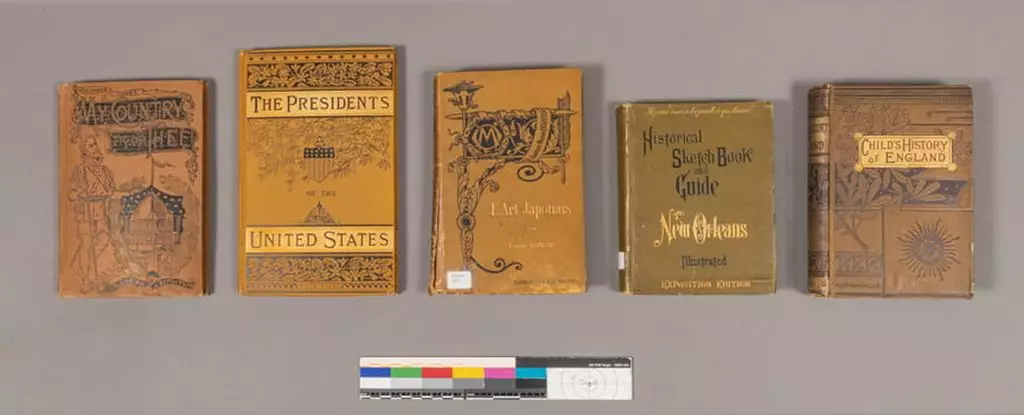In a recent study, researchers have uncovered a startling revelation about the presence of toxic dyes in Victorian-era books. These dyes, once used to create vibrant and eye-catching hues, have been found to contain harmful substances such as lead and chromium. While it may seem innocuous at first glance, casual contact with these heavy metals can pose a serious health risk, especially for those who handle antique books frequently, such as librarians and book dealers.
During the 19th century, a new era of dyes emerged, revolutionizing the way colors were produced. Arsenic was used to create vivid greens and magentas, while aniline was employed for deep blacks and purples. These dyes, often containing heavy metals, provided a longer-lasting and brighter color palette. However, the cost was steep – factory workers and others exposed to these toxic substances faced significant health risks.
While we no longer adorn ourselves in Victorian-era clothing, the legacy of toxic dyes persists in antique books and other vintage objects. A recent project led by art conservationists has identified numerous books dyed with arsenic-containing pigments, sparking concern about potential health hazards. This led researchers at Lipscomb University to investigate the presence of toxic dyes in their own library’s collection of brightly colored books.
Chemist Joseph Weinstein-Webb and his team at Lipscomb University conducted a series of tests on the vintage books, including X-ray fluorescence and inductively coupled plasma optical emission spectroscopy. These tests revealed alarming concentrations of lead and chromium in some samples, far exceeding safe exposure levels set by health authorities. The researchers also uncovered the presence of lead(II) chromate, a yellow pigment known for its use in famous artworks like Vincent van Gogh’s Sunflowers.
The discovery of toxic dyes in vintage books raises important questions about the safety of handling these objects. The researchers have taken measures to seal the affected books in plastic and remove them from circulation to prevent further exposure. Additionally, efforts are underway to identify other dyes used in the books that may contain different concentrations of harmful metals. This ongoing research highlights the importance of understanding the potential health risks associated with handling antique books and artifacts.
The findings of this study underscore the need for increased awareness of the dangers posed by toxic dyes in vintage books. By shedding light on the presence of harmful substances such as lead and chromium, researchers hope to promote safer handling practices and preservation techniques for these valuable cultural artifacts.


Leave a Reply